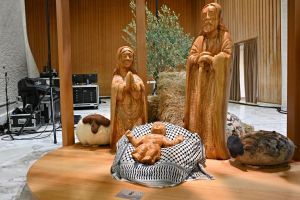Loving our neighbors in the age of climate politics

As Christians, we are commanded to love our neighbors as we love ourselves. In times that are dominated by increasing fears about climate change, how can we love our neighbors?
If the climate “crisis” is the biggest problem facing our world, then we Christians must make wise choices to make the world better for the people around us and for the future generations.
But academicians, politicians, and leaders across the globe are divided on the proposed dangers of climate change and on the course of action needed to tackle climate change.
In light of the vast difference in opinion, it would be wise for Christians to exert caution and understand the finer details of the climate debate before they plan to join the climate rescue movement. The following are some key highlights of our climate.
Not Unprecedented and No Reason to Panic
The on-going changes in our climate are not unprecedented. In fact, we’ve had similar warm periods (Roman Warm Period and Medieval Warm Period) during the past 2000 years and neither of them was caused by humans.
The climate has always oscillated in both ways, recording numerous warm and cool periods, with none of them having had anything to do with anthropogenic greenhouse gas emissions.
There has also been a slowdown in warming during the past 20 years, and scientists were left puzzled about the slowdown because it suggests that carbon dioxide emissions from human activity are not, contrary to claims, the primary drivers of recent global temperature levels.
NASA has announced that there will be a period of low solar activity in the next two decades, which in my opinion could cause temperatures to drop to levels that we experienced during the Little Ice age in the 17th century.
The Role of Politics and the Unreliable Forecasts
The United Nations—which calls itself as the authority on climate change—has taken complete control over the scientific discourse on climate change, thereby becoming the sole arbitrator of the climate debate and climate policy dissemination.
The UN’s climate policy recommendations are strictly based on faulty computer climate models and are considered the official directive for energy policies for all the countries that have entered into agreement with the UN.
Every doomsday claim—including the most recent ones from world leaders, non-profits, mainstream media, the Pope, and celebrities—is based on the computer climate model forecasts.
The problem with these models is that they have failed spectacularly in predicting temperatures and rate of warmings for every year in the past 15 years despite constant improvement. The models by design exaggerate the warming rate. The model forecasts are nowhere near the standard of being able to reflect real world temperatures or predict future temperatures.
Actual Real-World Conditions
Both the Arctic and Antarctic regions are at one of their healthiest states now. The 10,000-year Holocene record of sea ice indicate that the polar regions are nowhere close to the catastrophic melting which they experienced in the past.
Polar bear populations have actually become healthier in the past three decades. Agricultural output continues to increase in the world’s biggest food crop producers (U.S., India, and China). Extreme weather events like hurricanes, floods, and wildfires have shown no correlation with the rising temperatures, despite the contrasting false claims that the mainstream media peddle every day.
How Do We Love Our Neighbors Then?
Given these vast discrepancies between reality and climate fear-mongering, we can love our neighbors by cautioning them about the misinformation that is in our media and our highest political offices.
Driving a Tesla, cutting down on your beef consumption, having fewer children, using more expensive and less reliable energy technologies, and not flying in planes are some of the things that the alarmists believe will save our planet from climate change.
But given the climate reality—so different from the one pushed in mainstream media—loving our neighbor definitely does not look like what the climate alarmists are suggesting.
Maybe loving our neighbors involves prioritizing work efficiency ahead of the need to reduce your carbon footprint. Maybe loving your neighbors is take them to a coffee or giving them a ride in your oil-powered car, rather than worrying about the emissions from your car.
You can also love your neighbor by exposing the climate lies peddled by those in power, especially when those lies can have a direct impact on your neighbor’s power bill, tax rate, transport cost, purchase power, freedom to trade, and even their freedom to consume meat.
It is also loving to inform your neighbors about the fact that climate science is more complicated than the monotonous warming narrative they hear in the mainstream media, and that the present warming scenario does not warrant panic.
Vijay Jayaraj (M.Sc., Environmental Science, University of East Anglia, England), Research Associate for Developing Countries for the Cornwall Alliance for the Stewardship of Creation, lives in Bangalore, India.




























